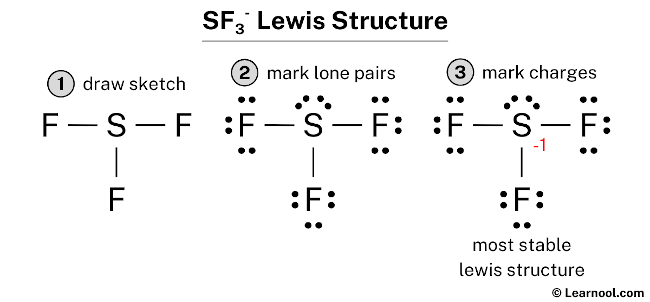5 Simple Steps to Master Lewis Structures

Have you ever wondered how the molecules that make up our world are structured at their most fundamental level? Lewis structures, named after the chemist G.N. Lewis, provide us with a simple visual representation of molecular structure, electron distribution, and chemical bonds. Whether you're a student grappling with chemistry homework, an enthusiast looking to dive deeper into the subject, or a professional chemist brushing up on your basics, mastering Lewis structures can make your understanding of molecular interactions clearer and more intuitive. Let's explore the art of drawing Lewis structures with five simple steps.
Step 1: Count All Valence Electrons

The first step in drawing a Lewis structure involves counting the total number of valence electrons for all atoms in the molecule or ion. Valence electrons are the electrons in the outermost shell of an atom, and they are involved in the formation of chemical bonds. Here’s how to do it:
- Identify the elements: Note down the atoms involved in the molecule.
- Sum up the valence electrons: Each element in the periodic table has a predictable number of valence electrons, generally ranging from 1 to 8 for the main group elements.
For example, consider the molecule CO₂. Carbon © has 4 valence electrons, while each Oxygen (O) has 6. So, in CO₂, there are a total of 4 + (6 × 2) = 16 valence electrons.
Step 2: Choose the Central Atom

Deciding which atom will be at the center of your structure is crucial. Here are some rules to follow:
- Typically, the atom with the least electronegativity becomes the central atom.
- Carbon and silicon often serve as the central atoms due to their high valency.
- Hydrogen (H) and fluorine (F) are never central atoms because they form only one bond.
In our CO₂ example, carbon would naturally be the central atom, with two oxygen atoms bonded to it.
Step 3: Draw the Skeleton Structure

Once you’ve chosen the central atom, sketch a basic skeleton of the molecule by connecting the central atom to the surrounding atoms with single bonds:
| Molecule | Skeleton Structure |
|---|---|
| CO₂ | O - C - O |

This step helps visualize how the molecule might look spatially before you add the electrons.
Step 4: Place Electrons on the Surrounding Atoms

After drawing the skeleton, start distributing the remaining electrons:
- Place lone pairs on the surrounding atoms first to achieve a full octet (or duet for hydrogen) wherever possible.
- Remember that each bond you’ve drawn represents two electrons (one pair).
📘 Note: Always ensure each atom has a full octet (except hydrogen), which is an important rule in chemistry known as the octet rule.
With CO₂, after drawing the skeleton, you’d place three lone pairs around each oxygen atom (since they need two more electrons each to complete their octets).
Step 5: Adjust the Structure for Formal Charges and Resonance

Once you’ve placed all electrons, check for:
- Formal Charges: Calculate the formal charge for each atom to check if the distribution of electrons is realistic. Formal charge can help identify if adjustments are needed.
- Resonance Structures: If more than one valid structure exists for a molecule, consider drawing all resonance structures to depict the molecule’s true state, which is often a hybrid of these structures.
For CO₂, formal charges show zero on each atom, indicating that no adjustments are needed. However, in molecules like NO₃⁻, multiple resonance structures would be drawn to represent the molecule accurately.
Wrapping up, mastering Lewis structures involves understanding the basics of electron behavior, bonding, and the visual representation of these interactions. The steps outlined above can be systematically applied to any molecule, providing a clear method to visualize molecular structures. Whether for homework, lab work, or just intellectual curiosity, these techniques serve as the foundation for understanding chemistry at the atomic and molecular level.
What do I do if there are more electrons than needed to complete octets?

+
Distribute the excess electrons as lone pairs on the central atom or expand its octet if it’s an element from the third row or below in the periodic table.
Can I start practicing Lewis structures with simple molecules?

+
Absolutely! Begin with simple molecules like H₂O, NH₃, or CO₂ to build confidence before moving to more complex structures.
What if I can’t satisfy the octet rule?

+
Some elements like boron (B) or beryllium (Be) often form stable compounds with fewer than eight electrons (e.g., BF₃ with six electrons around B). This is known as incomplete octets or hypovalency.



